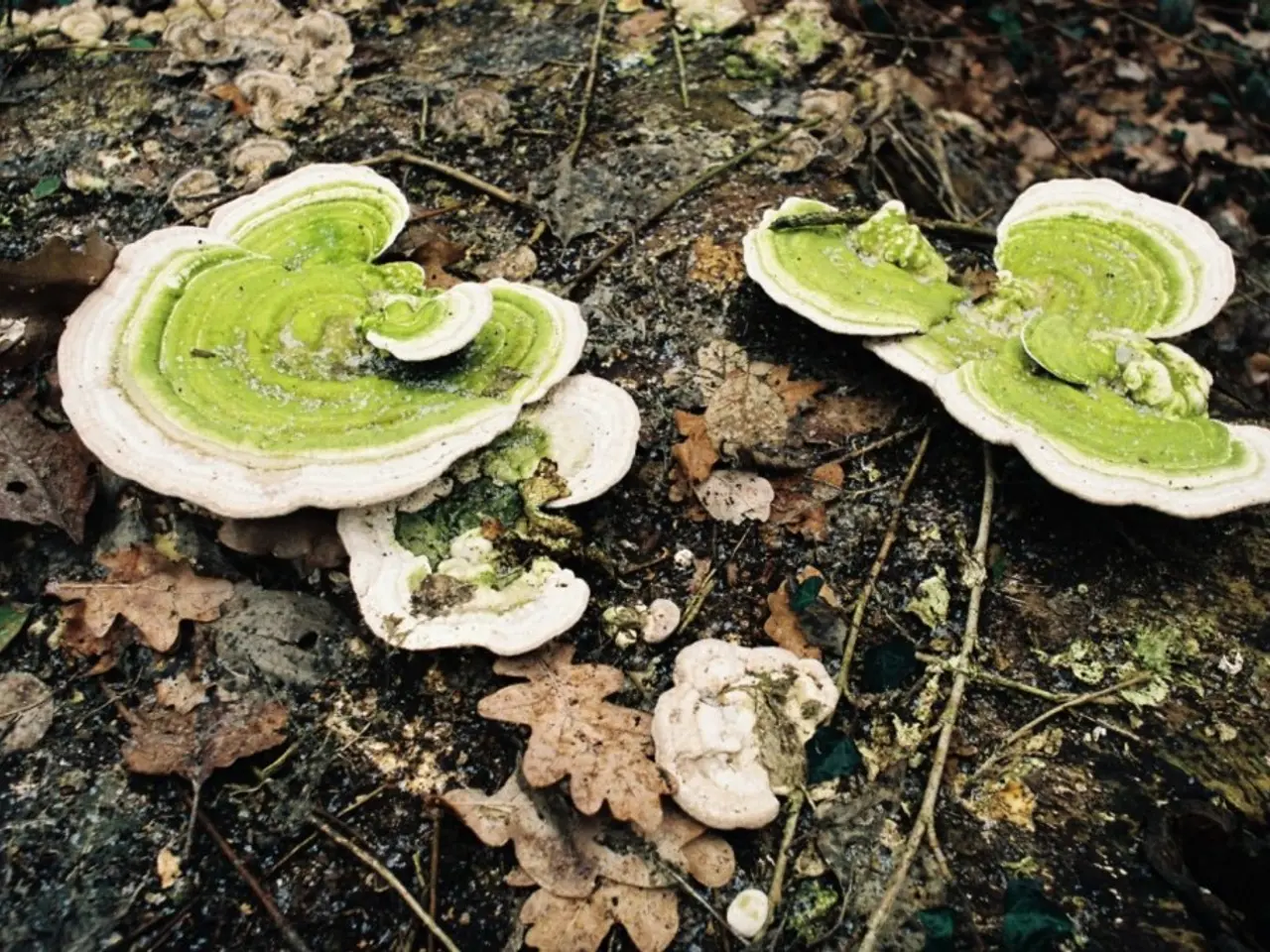Strategies for managing autumn debris for both dairy farmers and horticulturists
Autumn leaves can be a valuable resource for your garden, offering numerous benefits from improving soil structure to serving as an insulating material for perennials. Here's a guide on how to make the most of these organic treasures.
Firstly, leaves can be left under trees and shrubs until spring, forming a thin layer that protects roots, retains moisture, and eventually becomes a source of humus. This natural mulch is particularly beneficial for heat-loving perennials like roses, hydrangeas, chrysanthemums, and bulbs.
To insulate perennials, simply spread leaves in a loose 'bed' that retains heat and protects the roots from freezing and thawing repeatedly. However, in areas with low-growing plants, leaves should not be left in a thick layer as they block light, air, and can cause rot and kill new growth.
In some cases, it's necessary to remove leaves from the garden area, primarily when leaves are infected with diseases or pests. Leaves can also be a fire hazard, so avoid burning them. Burning leaves loses valuable nutrients, produces smoke and small particles that degrade air quality, and poses a fire risk.
Instead of burning, there are several eco-friendly options for processing leaves. Composting is one of the most popular methods. To accelerate the composting process, shred the leaves and mix them with kitchen scraps, grass clippings, twigs, and additives like rock flour, algae lime, or horn shavings to speed up decomposition.
Leaves can also be turned into leaf mold, a light, loose, slightly acidic substrate suitable for growing plants with delicate root systems like begonia, gloxinia, and cyclamen. To create leaf mold, collect leaves in large bags, pack them tightly, and leave the bag open for a few days to speed up the decomposition process. After filling the bag, fit about the same amount of leaves into the bag again, then pour boiling water directly onto the contents and close the bags.
Another method is to use leaves as a filler for warm beds. To create a warm bed, dig a trench or build up the sides, fill it with layers of leaves and green waste, and leave it for the winter. By spring, the humus will be ready. When using warm beds, top with fertile soil or compost to account for settling and potential nitrogen deficiency in the first months.
When leaves fall on the lawn, they should be raked or mowed with a lawn mower with a bagger/mulcher. Shredded leaves decompose faster and don't form a thick layer.
In conclusion, instead of viewing autumn leaves as a chore, consider them as a valuable resource for your garden. By composting, mulching, creating leaf mold, warm beds, and covering perennials, you can preserve and enhance the value of autumn litter, making your garden healthier and more beautiful.
Read also:
- Proposal for a Worker Radiation Protection Directive Requested by Commission
- Sharply rising fatal accidents in Mainz 2025: A 144% surge in deaths - authorities plan to enhance safety for the elderly population
- Exploring the Digestive Benefits of Fermented Foods
- Senator Rasha Kelej welcomed Maldives First Lady at the seventh installment of the Merck Foundation's First Ladies Initiative Summit to discuss collaborative healthcare programs.




